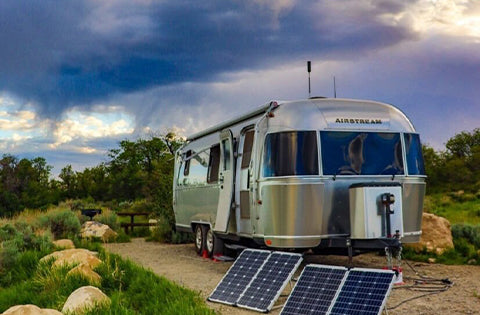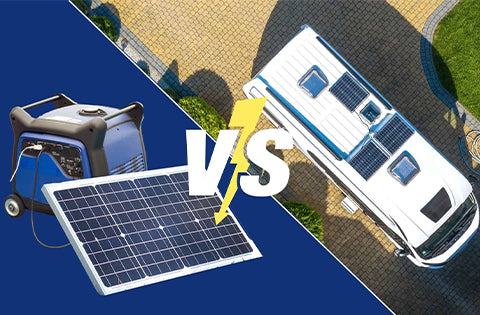The high-speed working and living style in cities make many citizens to have a RV trip during weekend. And RV manufacturers are also looking for ways to make their RVs more appealing to consumers. Solar panels and a lithium RV battery are becoming popular upgrades amongst RVers. Manufacturers are noticing this trend and equipping their new RVs with these upgraded features. Let’s take a look at why they’re gaining popularity.
RVers needs for solar an lithium
RV sales have skyrocketed in recent years, and campgrounds are busier than ever. Being able to fully utilize your RV while camping remotely without a power source, away from the crowds, is becoming increasingly popular. Combining solar panels with a lithium RV battery bank is one of the most popular ways RVers cut the cord that tethers them to overcrowded campgrounds.
The RV industry is taking notice of these trends as it looks to adapt its standards. For example, lithium RV batteries were added to the 2020 edition of RV industry’s adopted American National Standards Institute (ANSI) Low-Voltage Standard. This addition allows the RV Industry Association to recognize lithium batteries as RV products. Changes like these set the standard for manufacturers to include lithium batteries as an option on new RVs.
Why is solar power for RVs so popular?
Solar power is popular because of the freedom it provides. Having solar panels charge your RV’s battery bank gives you the ability to camp anywhere the sun shines. Keeping your batteries charged is critical for off-grid camping to keep many of your essential electronics running. Additionally, solar power prices are dropping as the technology evolves, bringing more manufacturers and installers to the market. Competition tends to benefit the consumer by driving the price down; solar technology is no different.
Many RVers install solar panels on their RVs
If you’ve been shopping for a new RV lately, you may have noticed a large “prepped for solar” sticker to get your attention. Many think this means all you’ll need is a solar panel or two, and you’ll be able to live forever off the grid. However, these marketing tools can be a bit misleading. Being prepped for solar often means there’s wiring running from an under-storage compartment to the roof for future solar panels to connect to your battery. Unfortunately, simply adding solar panels and lithium RV batteries isn’t enough to utilize your RV off the grid. To optimize charging and use your electrical outlets, you’ll need to add other components like an inverter and a solar charge controller.
Why are lithium RV batteries so popular?
Lithium RV batteries are becoming the battery of choice for RVers because of the incredible performance improvements compared to standard lead-acid batteries. Lithium batteries are lighter weight, last longer, have higher energy efficiency, and charge up to four times faster than lead-acid batteries.
Discharging a lead-acid battery below 50% of its rated capacity will cause damage. However, lithium batteries allow for greater than 80% depth of discharge without the risk of harming the battery. In fact, we design our batteries to last 3,000 – 5,000 cycles discharging at 100%. Conversely, a properly maintained lead-acid battery will typically only last 300 – 500 cycles. Still not convinced? RVers also love that their lithium RV batteries weigh considerably less. A typical 100 Ah lead-acid battery weighs around 60 lbs. However, a 100 Ah lithium RV battery typically weighs about 30 lbs. When you’re trying to conserve weight in an RV and create a large battery bank, lithium batteries provide a considerable advantage.
Buying a brand new RV that you immediately have to tear apart to upgrade is frustrating and means less time going on adventures with your loved ones. Luckily, it’s encouraging that RV manufacturers continue to evolve their processes to include upgrades that RVers are demanding. Of course, it will take time for lithium RV batteries and solar panels to be standard on all new RVs. In the meantime, RVers will continue to make these upgrades themselves and push the industry to keep up. And you can keep following with SOLARPARTS to get more information you want!
Twitter: Solarparts Instagram: Solarparts
Tumblr: Solarparts Pinterest: Solarparts
Facebook: Shenzhen Solarparts Inc
Email address: Philip@isolarparts.com
Homepage: www.isolarparts.com





